This 100 mile wild length of coastline was named El Pais Grande del Sur, the "Big Country to the South", by Spanish colonists at Carmel in the late 18th century. Robert Louis Stevenson called it "the greatest meeting of land and sea in the world".
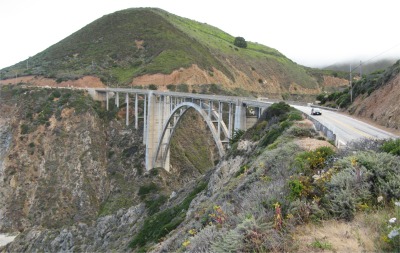 Bixby Creek Bridge |
I drove past Point Lobos State Reserve, Monterey's twin natural habitat of the Monterey cypress and soon came across the picturesque arched Bixby Creek Bridge, built in 1932. It was the world's largest single-arch span for many years, standing 260' tall and 700' long.
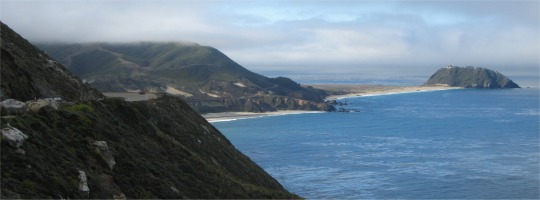 Point Sur Lighthouse on the Right Hand Volcanic Dome - Highway 1 Clinging to the Left Cliff |
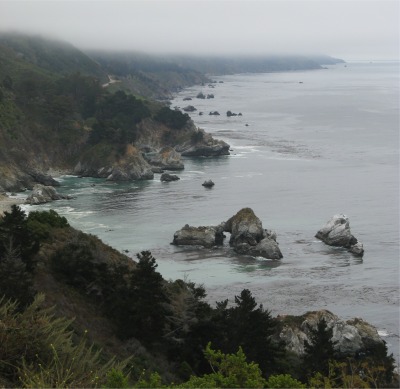 Rugged Coastline |
Further down the route was the Julia Pfeiffer Burns State Park. This gave access to an overlook where a 100' high bluff could be seen, over which the McWay Creek waterfall spilled onto a deserted, sandy beach. The canyon further up the creek was homesteaded by Christopher McWay in 1887.
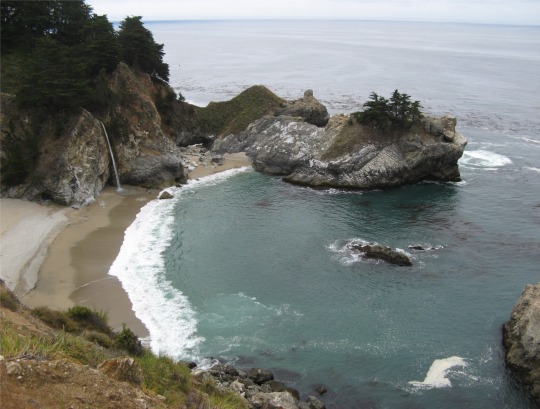 McWay Creek Waterfall |
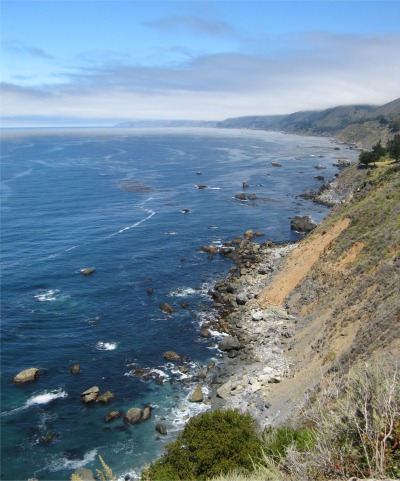 Bluer Big Sur |
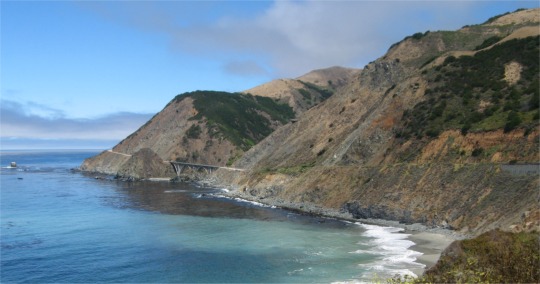 Highway 1 Clinging to the Cliffs |
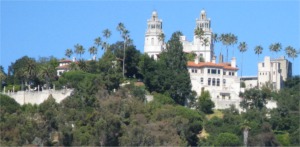 Hearst Castle Way Up on a Hill |
William's mother was quite adventurous and a keen learner, and decided to take William on an 18 month grand tour of Europe. It was here that William became totally immersed in European architecture and art, which had a tremendous influence on his later life.
William grew up and became an ebullient personality who made his own fortune in magazine and newspaper publishing. In 1903, he married Millicent Willson, an entertainer from New York. On the death of his mother in 1919, he inherited the San Simeon property. He began to build the castle and grounds on the hill as a tribute to his mother, and employed the services of Julia Morgan, the first ever woman to graduate in architecture in Paris. She took to the project with all her heart and enthusiasm.
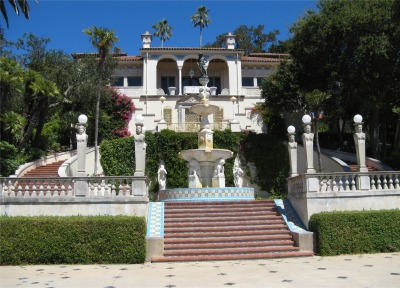 Staircase Leading to Bungalows |
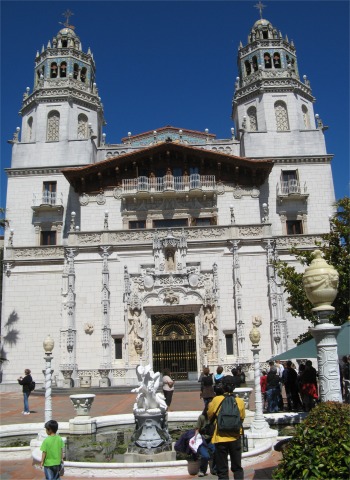 Casa Grande |
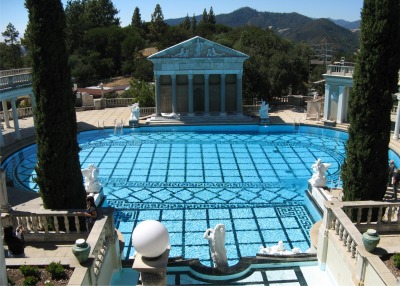 Neptune Pool |
Hearst was also an animal lover, and had his own private zoo built in the grounds, and let bison, deer, zebra and other creatures wander on his 'ranch', which stretched as far as the eye could see.
Now Hearst never lived here, it was one of his many country retreats. Every summer he would bring his wife and five sons here, as well as invited guests. However, at the age of 54 he found a 17 year old mistress, the actress Marion Davies. He did nothing to hide the affair, and eventually his wife agreed to remain in New York with their sons, provided she received an allowance, and could return to the castle when William was not there.
Hearst and his mistress entertained guests at the castle for the next twenty years. Guests would include the likes of Clark Gable, Charlie Chaplin and Winston Churchill. These would be flown to and from the airfield on the castle grounds, in Hearst's own DC-3. Dining was an interesting arrangement. Guests would assemble outside the dining room until Hearst appeared, and would follow him into the room. Hearst would sit in the middle of a long medieval table, with his mistress opposite him. He would have pre-arranged for new guests to be seated near him. Now Hearst invited guests, but he never asked them to leave. The longer they stayed, the further towards the end of the dining table they would be placed. One way of dropping a hint I guess.
When Hearst suffered a problem with his heart in 1947, he moved to a house in Beverly Hills, where he died in 1951.
The property was eventually passed on to the Hearst Company, which reared beef on the ranch, and still did. They in turn had sold the castle to California State, but maintained the ranch and herds of cattle. The Hearsts still maintain a secluded Victorian house on the ranch for themselves.
I found the story behind the castle as intriguing as the castle itself; a man who let his heart follow his dreams.
I headed south until I found a campsite for the night at Grover Beach; not easy to do, and made myself a pretty grim chilli, so grim I drowned it in tomato sauce. Like all good campsites, it was by a train track, and the van was literally bouncing about as a huge goods train came thundering past. Hmmm ..., hope they don't run all night.
I had an evening chin wag with my neighbours around their campfire. They were from San Diego and had been touring up as far as San Francisco, with a 39' trailer, which must have been a nightmare to reverse into the postage stamp sized plots on the site (this was one of the sardine tin variety campsites). I say my neighbours, it was just a chap, his son and his father, who couldn't speak much English. They were Mexican originally. There were eight bikes outside, so it must have been a packed trailer. I found out from them why Grover Beach was so busy. It was a quad-bike Mecca apparently, the endless miles of sands and dunes being the perfect environment for them. Once I stunk sufficiently of smoke, I wished them goodnight and left them to try and extinguish the mountain of wood they were burning.
